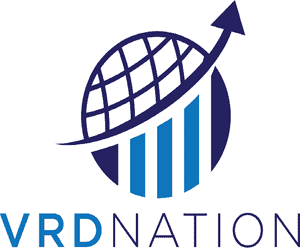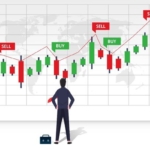Types of Risks
Introduction
Every investment carries risk.
Even the ones considered to be the safest carry some sort of risk. For example, if I put my money in the bank, which by any standard is considered to be safe, there is always a risk of the bank going bankrupt and unable to repay the money back to the depositors. This risk is, however, negligible but still can not be ruled out.
In order to develop a better understanding of risk, we need to understand the types of risks.
There are two types of risks:
-
- Systematic Risk and
- Non-Systematic Risk.
Systematic Risk
Systematic risk is more commonly called the “Market Risk”.
I am sure you would have heard this phrase at the end of any mutual fund advertisement- “Mutual funds are subjected to market risks”.
So, what exactly is market risk?
Market risk refers to any adverse event that can potentially impact the overall market. It is not specific to any particular stock or mutual fund or asset class.
For example,
-
- Change in government or political instability
- Natural disaster
- Change in taxation laws
- Change in foreign investment policy
All kinds of asset classes carry this risk and no matter how well a portfolio is diversified, one can not escape this as it carries within it the following components:-
-
- Interest rate risk:- The risk of interest rate going up or down thus changing the returns on investment
- Purchasing power risk:-This is related to inflation as with the rise in inflation, the purchasing power will reduce – to understand more about the same please read my earlier post “Inflation and how it affects our savings”
- Regulation Risk:- Changes in the laws of the country can impact the returns.
The bottom line is that we can not escape market risk but we need to figure out a way to manage it.
Now, let’s talk about a risk that can be managed..
Non-systematic risk
Non-systematic risk is the risk specific to an asset class.
For example, there are certain risks that are only applicable to the stock market, the real estate market, Gold or bitcoin for that matter.
Since this kind of risk is specific only to an asset class, it can be reduced by diversification. If you have a large investment portfolio in the stock market, you can diversify it by investing in Real estate or Gold.
That’s why non-systematic risk is also called “Diversifiable risk”.
Some of the examples of the non-systematic risks are:-
- Change in regulations impacting one industry
- The entry of a new competitor in the market
- A firm forced to recall one of its products (Example: the Galaxy Note 7 phone recalled by Samsung due to its battery turning flammable)
- A company exposed to have made fraudulent activities with its financial statements (Example: Satyam computers fudging their balance sheets)
- An employee union tactic for senior management to meet their demands
Non-Systematic risk can further be classified into these categories:-
-
- Business risk: Risk of doing business in a particular industry
- Exchange rate risk: Changes in the exchange rates of the currency can adversely impact the business
- Country risk: the risk associated with doing business in any country
- Liquidity risk: how easily the security is available in a particular secondary market it is traded in
I hope you developed a better understanding of the types of risk and would start thinking about managing some of the non-systematic risks that you might be exposed to.
Summary
|
Systematic Risk |
Non Systematic Risk |
|
|
1 |
This is non-diversifiable and can not be mitigated | This can be mitigated by diversifying |
|
2 |
This impacts almost all the securities or asset classes in the market | This impacts only a specific security or an industry |
|
3 |
External factors are responsible | Factors responsible are internal or specific to the company or Industry |
Howdy!
If you’re here for the first time, let’s get introduced.
VRD Nation is India’s premier stock market training institute and we (Team VRD Nation) are passionate about teaching each and every aspect of investing and trading.
If you’re here for the first time, don’t forget to check out “Free Training” section where we have tons of free videos and articles to kick start your stock market journey.
Also, we got two awesome YouTube channels where you can continue the learning process.
Must-Read Articles
Types of Risks
Introduction
Every investment carries risk.
Even the ones considered to be the safest carry some sort of risk. For example, if I put my money in the bank, which by any standard is considered to be safe, there is always a risk of the bank going bankrupt and unable to repay the money back to the depositors. This risk is, however, negligible but still can not be ruled out.
In order to develop a better understanding of risk, we need to understand the types of risks.
There are two types of risks:
-
- Systematic Risk and
- Non-Systematic Risk.
Systematic Risk
Systematic risk is more commonly called the “Market Risk”.
I am sure you would have heard this phrase at the end of any mutual fund advertisement- “Mutual funds are subjected to market risks”.
So, what exactly is market risk?
Market risk refers to any adverse event that can potentially impact the overall market. It is not specific to any particular stock or mutual fund or asset class.
For example,
-
- Change in government or political instability
- Natural disaster
- Change in taxation laws
- Change in foreign investment policy
All kinds of asset classes carry this risk and no matter how well a portfolio is diversified, one can not escape this as it carries within it the following components:-
-
- Interest rate risk:- The risk of interest rate going up or down thus changing the returns on investment
- Purchasing power risk:-This is related to inflation as with the rise in inflation, the purchasing power will reduce – to understand more about the same please read my earlier post “Inflation and how it affects our savings”
- Regulation Risk:- Changes in the laws of the country can impact the returns.
The bottom line is that we can not escape market risk but we need to figure out a way to manage it.
Now, let’s talk about a risk that can be managed..
Non-systematic risk
Non-systematic risk is the risk specific to an asset class.
For example, there are certain risks that are only applicable to the stock market, the real estate market, Gold or bitcoin for that matter.
Since this kind of risk is specific only to an asset class, it can be reduced by diversification. If you have a large investment portfolio in the stock market, you can diversify it by investing in Real estate or Gold.
That’s why non-systematic risk is also called “Diversifiable risk”.
Some of the examples of the non-systematic risks are:-
- Change in regulations impacting one industry
- The entry of a new competitor in the market
- A firm forced to recall one of its products (Example: the Galaxy Note 7 phone recalled by Samsung due to its battery turning flammable)
- A company exposed to have made fraudulent activities with its financial statements (Example: Satyam computers fudging their balance sheets)
- An employee union tactic for senior management to meet their demands
Non-Systematic risk can further be classified into these categories:-
-
- Business risk: Risk of doing business in a particular industry
- Exchange rate risk: Changes in the exchange rates of the currency can adversely impact the business
- Country risk: the risk associated with doing business in any country
- Liquidity risk: how easily the security is available in a particular secondary market it is traded in
I hope you developed a better understanding of the types of risk and would start thinking about managing some of the non-systematic risks that you might be exposed to.
Summary
|
Systematic Risk |
Non Systematic Risk |
|
|
1 |
This is non-diversifiable and can not be mitigated | This can be mitigated by diversifying |
|
2 |
This impacts almost all the securities or asset classes in the market | This impacts only a specific security or an industry |
|
3 |
External factors are responsible | Factors responsible are internal or specific to the company or Industry |




















Leave A Comment